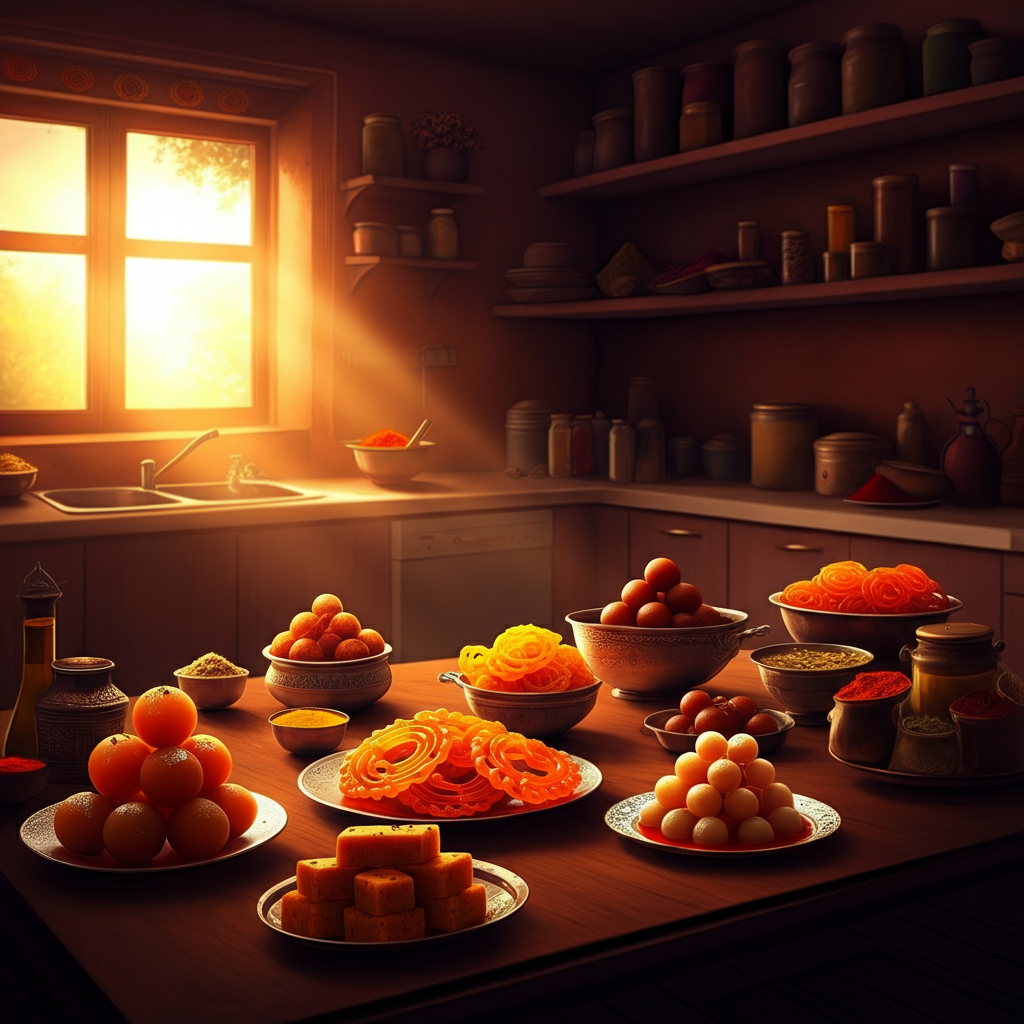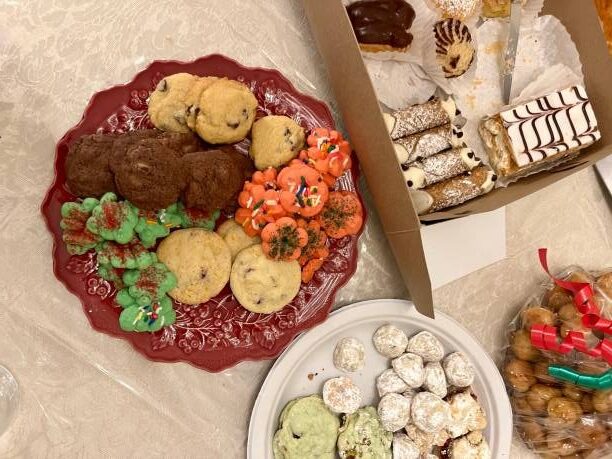The aroma of cardamom and ghee sizzling in a pan takes me straight back to my childhood kitchen, where my grandmother would spend hours creating magic with milk, sugar, and a handful of simple ingredients. Indian sweets aren’t just desserts—they’re edible poetry that tells the story of celebrations, festivals, and family traditions passed down through generations.
Learning to make authentic Indian sweets might seem intimidating at first, but the truth is that most traditional recipes rely on basic techniques and ingredients you can easily find. The secret lies not in complicated procedures, but in understanding the science behind sugar syrup consistency, milk reduction, and the perfect balance of flavors that make each sweet memorable.
Whether you’re preparing for Diwali, a wedding celebration, or simply want to surprise your family with homemade mithai, this comprehensive guide will walk you through everything you need to know. From essential ingredients to step-by-step recipes for popular sweets like Gulab Jamun, Jalebi, and Barfi, you’ll discover how patience and practice can transform your kitchen into a traditional Indian sweet shop.
The beauty of making Indian sweets at home extends beyond the final product. It’s about connecting with centuries-old traditions, understanding the cultural significance behind each recipe, and creating new memories while honoring old ones. Let’s embark on this sweet journey together.
Essential Ingredients for Authentic Indian Sweets
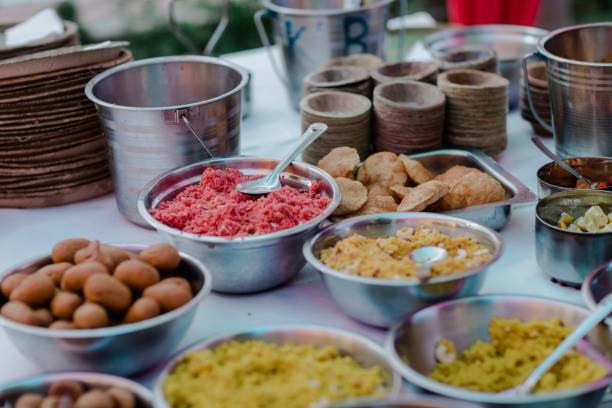
Creating authentic Indian sweets starts with sourcing the right ingredients, and quality makes all the difference in achieving that perfect taste and texture your taste buds remember. While Indian grocery stores are your best bet for authentic ingredients, many items are now available in regular supermarkets or online retailers.
Dairy Foundation:
- Whole milk: The backbone of most Indian sweets, providing richness and authentic flavor
- Khoya/Mawa: Reduced milk that serves as the base for numerous sweets
- Paneer: Fresh cottage cheese used in various preparations
- Heavy cream: Essential for creating smooth, creamy textures
Sweetening Agents:
- Pure cane sugar: Preferred over processed sugar for traditional taste
- Jaggery (Gur): Adds depth and earthiness to regional variations
- Condensed milk: A modern shortcut that maintains authenticity
Flours and Binding Agents:
- All-purpose flour (Maida): Creates the perfect batter consistency
- Chickpea flour (Besan): Essential for certain regional sweets
- Semolina (Sooji): Adds texture and helps with binding
Flavor Enhancers:
- Pure ghee: The golden elixir that elevates every sweet
- Green cardamom: Ground fresh for maximum aromatic impact
- Rose water: Provides delicate floral notes
- Saffron: The luxury ingredient that adds color and fragrance
Gulab Jamun: The Crown Jewel of Indian Sweets
Gulab Jamun holds a special place in Indian celebrations, and mastering this recipe is like earning your sweet-making credentials. The name literally translates to “rose berry,” though these golden spheres taste nothing like berries—they’re pure indulgence soaked in aromatic sugar syrup.
The secret to perfect Gulab Jamun lies in achieving the right dough consistency and maintaining optimal oil temperature. Too hot, and they’ll brown outside while remaining raw inside; too cool, and they’ll absorb excess oil and become heavy.
Ingredients for Gulab Jamun:
- 1 cup milk powder
- 1/4 cup all-purpose flour
- 1/8 teaspoon baking soda
- 2 tablespoons ghee
- 1/4 cup milk (approximately)
- Oil for deep frying
For Sugar Syrup:
- 1.5 cups sugar
- 1.5 cups water
- 4-5 green cardamom pods
- 1 tablespoon rose water
- Few saffron strands
Step-by-Step Method:
Start by preparing the sugar syrup, as it needs time to reach the right consistency. Combine sugar and water in a heavy-bottomed pan, add cardamom pods and saffron, then simmer until it reaches a one-string consistency. You’ll know it’s ready when the syrup forms a thin thread when dropped from a spoon.
For the dough, mix milk powder, flour, and baking soda in a bowl. Add ghee and rub it into the dry ingredients until the mixture resembles breadcrumbs. Gradually add milk, a tablespoon at a time, until you can form a soft, smooth dough. The dough should be just moist enough to hold together without being sticky.
Heat oil to medium temperature (around 160°C/320°F). Roll the dough into small, smooth balls without any cracks—cracks will cause them to break while frying. Gently slide them into the oil and fry slowly, turning occasionally until they’re evenly golden brown.
Immediately transfer the hot Gulab Jamuns into the warm sugar syrup. They’ll soak up the syrup and double in size over the next few hours. Serve warm or at room temperature.
Jalebi: The Spiral of Sweetness
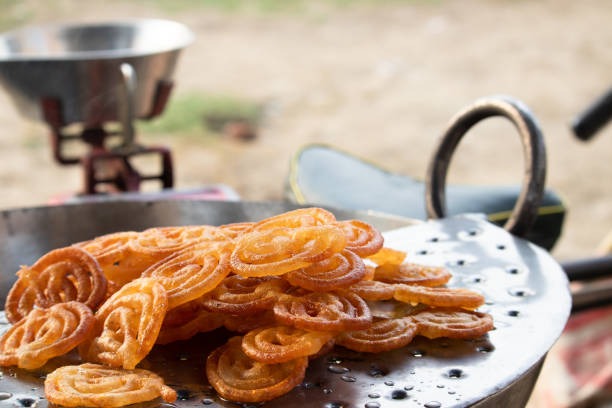
Nothing quite compares to the sight of fresh Jalebi spiraling in hot oil, transforming from pale batter into vibrant orange coils of crispy sweetness. This beloved street food favorite requires a fermented batter that creates the characteristic tangy undertone balancing the sweet syrup coating.
The art of making perfect Jalebi lies in achieving the right batter consistency and mastering the spiral technique. Your first attempts might look more like abstract art than perfect spirals, but practice makes perfect, and even imperfect Jalebis taste incredible.
Ingredients for Jalebi:
- 1 cup all-purpose flour
- 2 tablespoons cornstarch
- 1/8 teaspoon turmeric powder
- 1 cup yogurt
- 1 teaspoon active dry yeast
- Warm water as needed
- Oil for deep frying
For Sugar Syrup:
- 2 cups sugar
- 1 cup water
- 1/2 teaspoon cardamom powder
- 1 tablespoon lemon juice
- Few drops of orange food coloring (optional)
Step-by-Step Method:
Begin by activating the yeast in 2 tablespoons of warm water with a pinch of sugar. Let it sit for 10 minutes until frothy. Meanwhile, whisk together flour, cornstarch, and turmeric in a large bowl.
Add yogurt and the activated yeast mixture to the dry ingredients. Gradually add warm water while whisking continuously until you achieve a smooth, lump-free batter with the consistency of thick cream. Cover and let it ferment in a warm place for 8-12 hours.
Prepare the sugar syrup by combining sugar, water, and cardamom powder. Boil until it reaches a sticky consistency that coats the back of a spoon. Add lemon juice and food coloring if using, then keep warm.
Heat oil to medium-high temperature. Transfer the fermented batter to a squeeze bottle or pastry bag. Starting from the center, create spiral patterns directly in the hot oil. Fry until crispy and golden, then immediately dip in warm sugar syrup for 30 seconds before serving.
Barfi: The Versatile Canvas
Barfi represents the versatility of Indian sweet-making, serving as a canvas for countless flavor combinations and decorative possibilities. The basic recipe involves reducing milk to a fudge-like consistency, but the variations are endless—from classic plain milk Barfi to elaborate pistachio, coconut, or chocolate versions.
The key to perfect Barfi lies in achieving the right consistency during the milk reduction process. Too little cooking results in soft, sticky squares that won’t hold their shape; too much creates a hard, chewy texture that’s difficult to cut.
Ingredients for Basic Milk Barfi:
- 4 cups whole milk
- 1/2 cup sugar
- 2 tablespoons ghee
- 1/2 teaspoon cardamom powder
- 2 tablespoons chopped pistachios
- Silver leaf (Varak) for decoration (optional)
Step-by-Step Method:
Pour milk into a heavy-bottomed, wide pan and bring to a boil over medium heat. Reduce heat to low and simmer, stirring frequently to prevent sticking. The milk will gradually reduce and thicken—this process takes patience and can take 45-60 minutes.
When the milk reduces to about one-fourth of its original volume and starts leaving the sides of the pan, add sugar and continue cooking. The mixture will become loose again but will thicken as the sugar incorporates.
Add ghee and cardamom powder, continuing to stir until the mixture forms a thick mass that doesn’t stick to the pan. You’ll know it’s ready when you can draw a line through the mixture with your spoon and it stays separated for a few seconds.
Transfer to a greased plate or tray and spread evenly to about 1/2 inch thickness. Sprinkle with chopped pistachios and gently press them into the surface. Allow to cool completely before cutting into diamond or square shapes.
Expert Tips and Tricks for Perfect Results
After years of experimentation and learning from experienced sweet makers, certain techniques consistently produce superior results. These insider tips can save you from common pitfalls and elevate your homemade sweets from good to exceptional.
Temperature control emerges as the most critical factor across all Indian sweet recipes. Invest in a good thermometer and learn to recognize visual cues—sugar syrups form different consistencies at specific temperatures, and oil temperature dramatically affects frying results.
Sugar Syrup Mastery:
Understanding sugar syrup consistency determines success in most Indian sweets. The “one-string” consistency for Gulab Jamun means the syrup forms a single thread when dropped from a spoon. For Jalebi, you need a slightly thicker consistency that coats the back of a spoon but still flows freely.
Milk Reduction Secrets:
When reducing milk for Khoya or Barfi, use the widest pan available to maximize surface area and reduce cooking time. Stir constantly during the final stages to prevent burning, and remember that the mixture continues to thicken as it cools.
Dough and Batter Techniques:
For Gulab Jamun dough, the “just right” consistency means it holds together without cracking but isn’t sticky. If it’s too dry, add milk drop by drop; if too wet, add a little milk powder rather than flour, which can make them dense.
Frying Fundamentals:
Maintain consistent oil temperature using a thermometer or the bread test—a small piece of bread should sizzle and rise to the surface within 15 seconds in properly heated oil. Always fry in small batches to maintain temperature and ensure even cooking.
Regional Variations and Creative Adaptations
Indian sweets showcase incredible regional diversity, with each state contributing unique ingredients, techniques, and flavor profiles. Understanding these variations opens up endless possibilities for experimentation while respecting traditional foundations.
Bengal’s contribution to Indian sweets includes the iconic Sandesh and Mishti Doi, both showcasing the region’s mastery of chenna (cottage cheese) based preparations. These sweets tend to be lighter and less intensely sweet than their northern counterparts.
Bengali Style Adaptations:
- Replace sugar with date palm jaggery for authentic Bengali flavor
- Incorporate cardamom and rose water more subtly
- Focus on texture contrasts rather than intense sweetness
South Indian Influences:
South Indian sweets often incorporate coconut, jaggery, and ghee in different proportions, creating distinct flavor profiles. Kerala’s Payasam tradition influences sweet preparation techniques throughout the region.
Gujarati Sweet Traditions:
Gujarat’s sweet-making tradition emphasizes gram flour (besan) and creates lighter, less dairy-heavy options. Their techniques for achieving perfect texture in gram flour based sweets offer valuable insights for creating variation recipes.
Modern Fusion Approaches:
Contemporary sweet makers experiment with international flavors while maintaining traditional techniques. Chocolate Barfi, Saffron Cheesecake inspired by Kulfi, and Cardamom Macarons represent successful fusion approaches.
People Also Ask: Common Questions About Indian Sweets
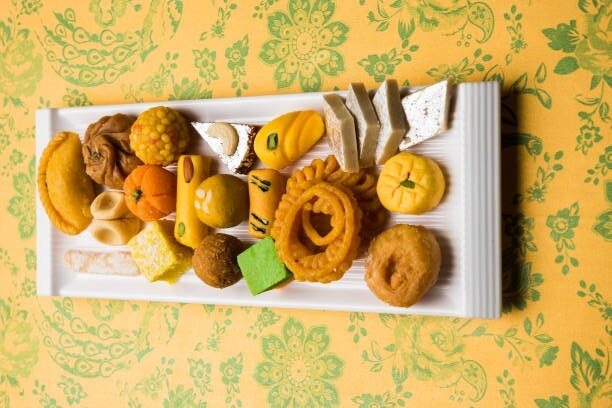
How long do homemade Indian sweets last?
Most homemade Indian sweets stay fresh for 3-5 days at room temperature when stored in airtight containers. Milk-based sweets like Gulab Jamun and Barfi should be refrigerated after 2 days and can last up to a week. Syrup-based sweets like Jalebi are best consumed within 24-48 hours for optimal crispiness.
Can I make Indian sweets without khoya?
Yes, you can substitute khoya with condensed milk, milk powder, or ricotta cheese depending on the recipe. For every cup of khoya, use 3/4 cup condensed milk or 1 cup milk powder mixed with ghee. These substitutions may slightly alter the texture but maintain authenticity.
Why do my Gulab Jamuns break while frying?
Gulab Jamuns typically break due to cracks in the dough balls, incorrect oil temperature, or overly dry dough. Ensure your dough is smooth and crack-free, maintain oil temperature around 160°C, and add milk gradually if the dough seems too dry.
What’s the secret to getting Jalebi crispy?
Crispy Jalebi requires properly fermented batter (8-12 hours), correct consistency (like thick cream), and appropriate oil temperature. The batter should be slightly tangy from fermentation, and the oil should be hot enough to create immediate sizzling but not so hot that it burns the outside before cooking through.
How do I know when sugar syrup is ready?
Sugar syrup consistency varies by recipe, but the “one-string” test is most common. Dip a spoon in the syrup and lift it—if a single thread forms and holds for a second before breaking, it’s ready. For thicker consistency, the syrup should coat the back of a spoon and flow slowly.
Frequently Asked Questions
Can I prepare Indian sweets in advance for festivals?
Most Indian sweets can be prepared 2-3 days in advance when stored properly. Barfi and similar milk-based sweets actually improve in flavor after resting overnight. Gulab Jamun tastes better after soaking in syrup for several hours. However, fried items like Jalebi should be prepared fresh for best results.
What equipment do I need to start making Indian sweets?
Essential equipment includes a heavy-bottomed pan for even heating, a good thermometer for oil and syrup temperatures, fine-mesh strainer, wooden spoons for stirring, and airtight storage containers. A candy thermometer specifically helps achieve perfect sugar syrup consistency.
Are there healthier alternatives for traditional recipes?
You can reduce sugar content by 10-15% in most recipes without significantly affecting taste. Substitute ghee partially with coconut oil, use jaggery instead of refined sugar, and incorporate nuts for added nutrition. However, dramatic changes may alter the authentic taste and texture.
How do I fix common mistakes while making sweets?
For oversweetened sweets, balance with a pinch of salt or lemon juice. If Barfi becomes too hard, knead in a little warm milk. For broken Gulab Jamuns, ensure dough consistency and oil temperature are correct before frying the next batch.
Can I freeze homemade Indian sweets?
Most Indian sweets freeze well for up to 3 months when wrapped properly. Thaw gradually in the refrigerator overnight before serving. However, texture may change slightly after freezing, particularly in milk-based sweets.
Start Your Sweet-Making Journey Today
Creating authentic Indian sweets at home connects you with generations of tradition while filling your kitchen with incredible aromas and your family with joy. These recipes represent just the beginning of an exciting culinary adventure that rewards patience with unforgettable flavors.
Remember that perfection comes with practice, and even imperfect homemade sweets taste better than store-bought alternatives because they’re made with love and attention. Start with one recipe, master the basic techniques, and gradually expand your repertoire as your confidence grows.
The satisfaction of watching family members’ faces light up when they taste your homemade Gulab Jamun or hearing the delighted surprise when friends discover you made that perfect Barfi from scratch is worth every moment spent stirring, waiting, and learning. Your grandmother’s legacy of sweet-making lives on through your hands, creating new memories while honoring timeless traditions.
Meta data
Meta title
How to Make Authentic Indian Sweets: Complete Beginner’s Guide
Meta description
Learn to make authentic Indian sweets at home with step-by-step recipes for Gulab Jamun, Jalebi, and Barfi. Expert tips for perfect results every time.
